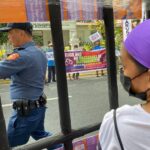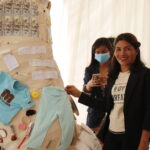Bangkok Post, November 20, 2007
Southeast Asian government leaders will sign a document this week in Singapore that fails many tests.
By Jenina Joy Chavez
When leaders of the member governments of the Association of Southeast Asian Nations (ASEAN) meet for their 13th summit in Singapore today, the world’s attention will be focused on what they will do on the matter of Burma. The Burma question has become a yearly embarrassment and pressure point for Asean, and everyone is curious whether the collective global indignation after the September violence will prompt Asean leaders to do something different this year.
The expectation that Asean will do something different also arises from its announcement three years ago that it will embark on building a charter to formalise itself, establish the legal framework that would define the duties and responsibilities of its members, and guide its relationship with external partners. This was followed by instructions to the Eminent Persons Group, which was appointed to draw up recommendations on what the charter should contain, to be ”daring and visionary”.
The document, which will turn Asean into a rules-based legal entity like the European Union, will be signed by the bloc’s 10 leaders at the summit.
The charter carried some hope for the region at first. After leaders signed the declaration on the establishment of the Asean charter process in Kuala Lumpur in December 2005, civil society groups saw this as a chance to engage Asean on what a meaningful regionalism for the people should look like.
The initial expectation and hope, however, soon turned into concern when it became apparent that the Asean charter was not to be the subject of wide-ranging discussions, and that it was not to be made public until after it is signed by Asean leaders.
Nothing in the charter was seen until Thai independent media outfit Prachatai and the Philippine Centre for Investigative Journalism posted leaked copies of the final draft of the charter on their websites in early November.
The concern then turned into disappointment — one fails to see the daring and vision that was hoped for in the Asean charter.
The charter does its job in terms of codifying Asean’s many previous agreements and declarations, and bestowing it legal personality. It clarifies issues on membership, and delineates functions and responsibilities of the different Asean organs.
It creates a new formal Asean bureaucracy — from the formation of the three community councils (political-security, economic and socio-cultural) and the establishment of the Committee of Permanent Representatives, to the redefinition and strengthening of the roles of the secretary-general and the Asean secretariat.
It even gives a mandate to the much awaited ASEAN human rights body.
Disappointment springs not so much from things that are found in the charter, but from things that are not but should be.
The charter reaffirms a government-centric Asean, defining rules of engagement for members, and institutionalising age-old values of consensus and non-interference. However, it lacks clear mechanisms for dispute settlement, accountability and redress.
While the bodies themselves are given a mandate, the details are not to be found in the charter, raising concerns that leaving them to ministerial bodies and instruments of Asean would dilute such a mandate.
Good offices, conciliation and mediation may be resorted to, but the default for unresolved conflicts is still the Asean summit. Considering the long years that the leaders have managed to ignore or dodge urgent but controversial issues in the region, undefined dispute mechanisms that are eventually settled politically hardly provides confidence that disputes will receive speedy and proper resolution at all.
The inclusion of human rights in the charter’s preamble and statement of principles, and the creation of the human rights body is a milestone for Asean. It is regrettable that the charter leaves this article incomplete, with the body’s operation still to be defined according to the terms of reference to be determined at the Asean Foreign Ministers Meeting, which is another political gathering.
The charter talks about a people-oriented Asean, and upholds consultation and consensus as basic principles in decision-making. Yet the charter does not provide clear mechanisms for transparency and participation, and does not recognise engagement and interaction with non-state actors and civil society. The charter is also silent about how ASEAN’s operations can be subject to independent scrutiny, how its processes can be accessed by interested groups, and how official information should be made public.
Other missing elements include the non-mention of migrant labour which makes up a substantial portion of labour flow in the region.
The only reference to gender and women’s rights was in the selection of the secretary-general and two of the four deputies.
Finally, the charter fails to celebrate the plurality of Asean economic experiences and recognise its members’ successes based on heterodox policy mixes, by explicitly enshrining in the charter the principles of a market-driven economy.
The desire for a single market and production base should not be construed as exclusively dependent on liberalisation, but should be treated as an attempt to learn from how the more successful Asean members were able to do it without yielding everything to the market, and to build the capacities of other members in the spirit of genuine regional solidarity.
Many analysts have already written off the charter as another of Asean’s many grand declarations that never got implemented. That is, whatever may be considered positive about it will again take years to see fruition. But when leaders announced that the charter will be ”daring and visionary”, civil society was at least willing to give them a chance.
The charter is a letdown. It does not equip Asean to deal with controversial issues that hounded it in the past, and certainly does not offer anything new that could help it deal with Burma.
It is time that the initiative is wrested from the political elites and given back to the people. Let us define the Asean we need, and start the building of an Asean people’s charter.
Jenina Joy Chavez is coordinator of Focus on the Global South-Philippines Programme and an active member of the Solidarity for Asian Peoples’ Advocacies (Sapa) Working Group on Asean. She is also a trustee of Action for Economic Reforms.
Published in Bangkok Post







